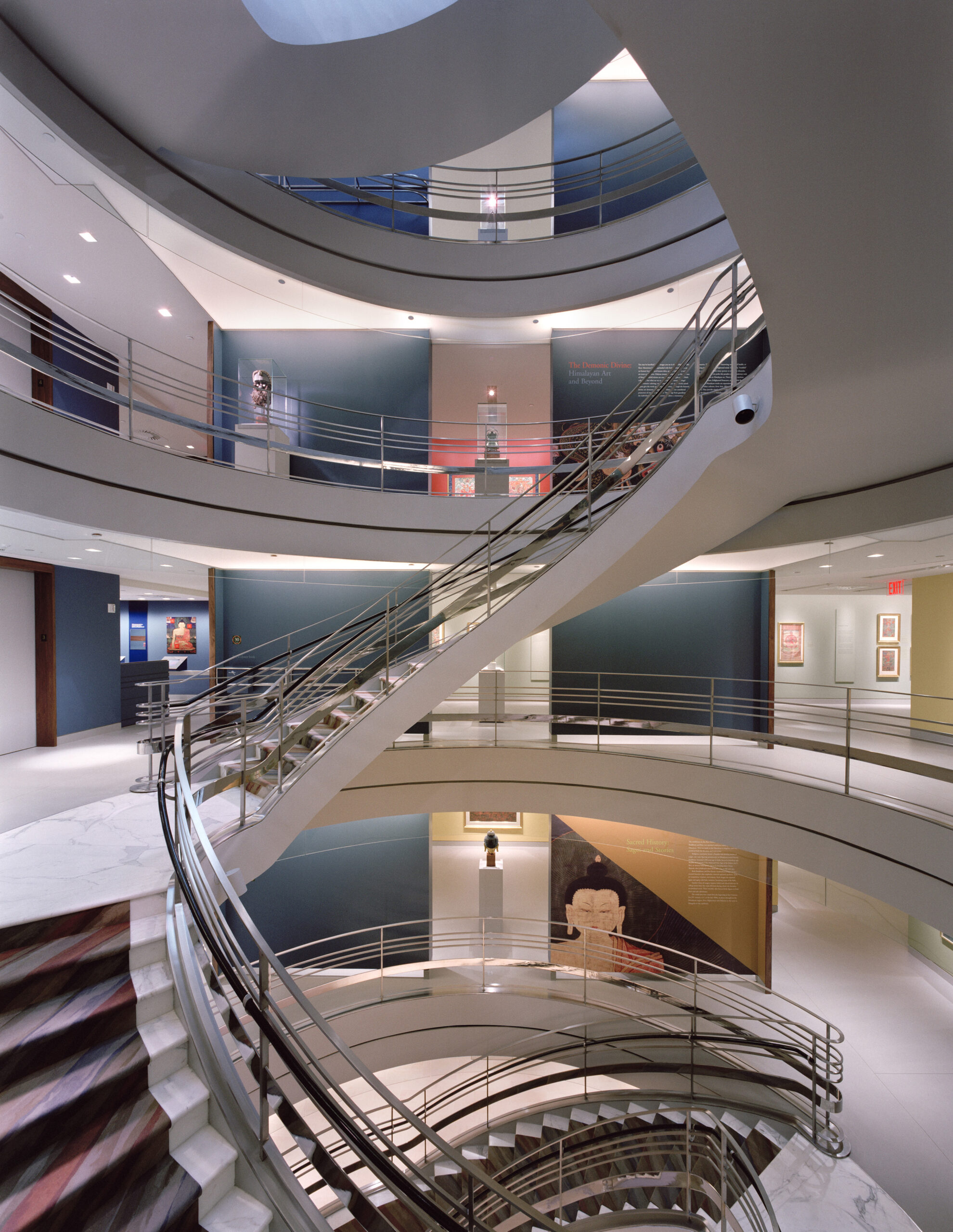
This blog post is written by Jorrit Britschgi, the recently appointed Director of Exhibitions, Collections, and Research at the Rubin Museum.
A passage from Herman Hesse’s Siddhartha quite adequately describes both the physical setup of the galleries of the Rubin Museum as well as the aspirations of the artworks they contain: “We are not going in circles, we are going upwards. The path is a spiral; we have already climbed many steps.”
I have been working at the Museum as Director of Exhibitions, Collection and Research since March of this year. Whenever I’ve had a free minute in between meetings, I roam the galleries, trying to get a feel for the spaces and understand how visitors experience them for the first time. Being from the Swiss Alps—and hence sporting the legs of a mountain goat—I make use of Andrée Putman’s iconic spiral staircase that serves as the conceptual and physical backbone of our institution. The Germanic people had the ash tree Yggdrasil at the center of the cosmos; in Buddhism and Hinduism, Meru takes up that function; the Swiss have the veritable Matterhorn (referred to in local dialect as Horu, or horn) and the “Rubin-verse” is rooted in Putman’s spiral. This axis mundi is very much worth climbing.
Beginning the Journey

Made out of stainless steel and marble, the staircase seems to spiral up forever, topped only by a distant cupola lit by natural light. Likewise distant at this viewpoint at the base of the staircase is the “Restaurant at the End of the Universe,” the oasis Café Serai, awaiting the weary explorer with delicacies after considerable intellectual exertion.
The Second Floor: An Introduction to the Himalayas

A short flight of stairs takes one up to Gateway to Himalayan Art. You may not be able to tell a Buddha from a Bodhisattva; you might even think the “Green Tara” is a drink mixed in somber back alley bars in Tashkent to rival the Long Island Ice Tea. But no worries, by the end of a trip to Gateway, you will be enlightened and ready to move on to the third level.
The Third Floor: Artistic Masterpieces “Across Space and Time”

The third floor’s Masterworks of Himalayan Art exhibition demands much more from visitors, by introducing stylistic developments across space and time. This is where the great collection of the Rubin Museum comes into play. You may be entranced by the outstanding works of art; you may be awestruck by the technical artistic achievements and back stories;or you may find delight in making stylistic connections all the way from the Indian Subcontinent to Kashmir and the Tibetan plateau. However, even the most seasoned museum-goer needs a rest at some point, and this is where the next floor comes in handy.
The Fourth Floor: A Space to Reflect

Sacred Spaces features our Tibetan Buddhist Shrine Room, a space for contemplating artworks in an immersive context. Surround yourself with the traditions of the Himalayas, take a breath, and hear distant Tibetan long horns while you gaze at the astonishing panoramic vista photographed in Mustang, Nepal.
The Fifth Floor and Beyond: More to Discover

And yes, you have arrived and are ready for the next two levels, which feature a home for our impressive roster of temporary exhibitions. Keen on knowing about the role that the seasons play in Nepalese art or how cultural icon Genesis Breyer P-Orridge found inspiration in the spiritual culture of Kathmandu? The answers all lie in the Museum’s upper levels.
Embark on the journey yourself! Plan a visit to the Rubin Museum.

